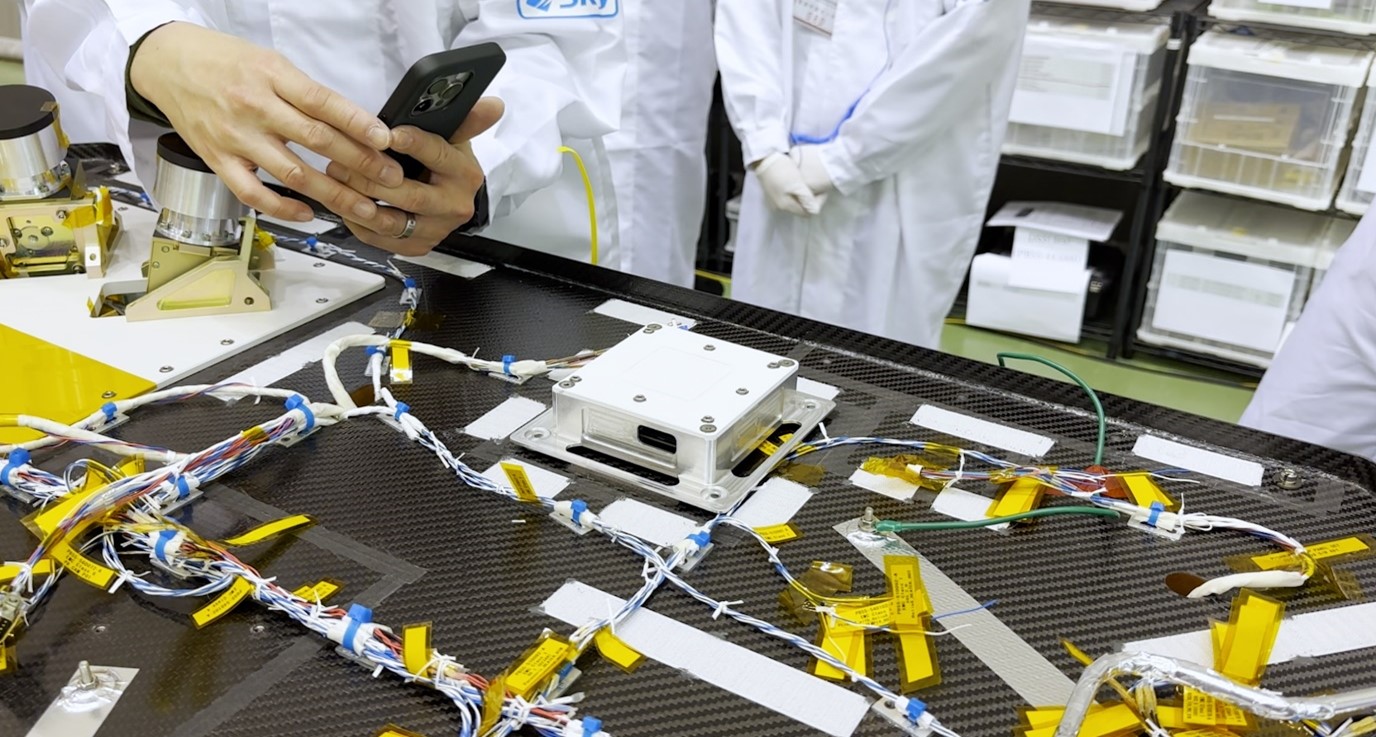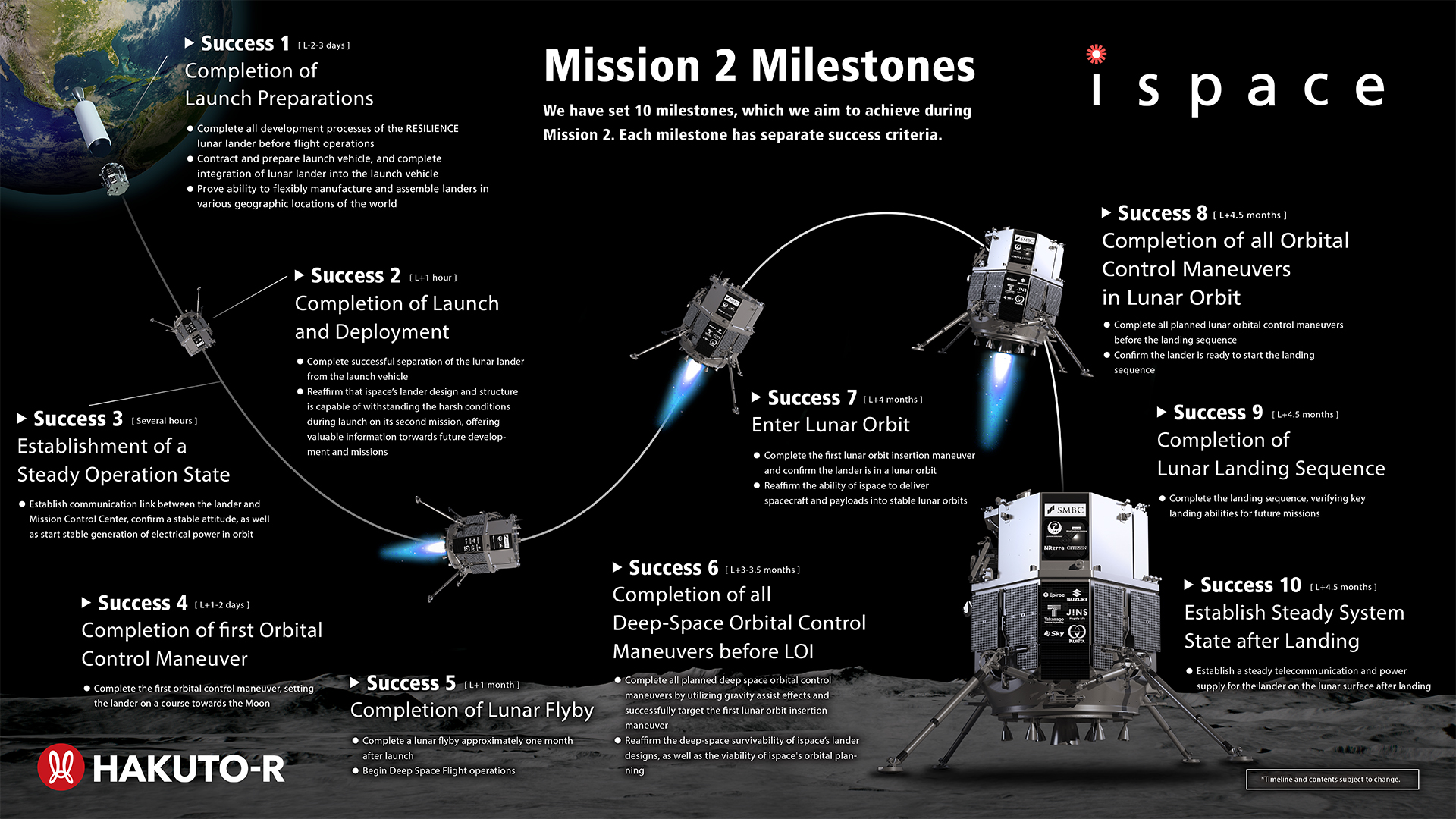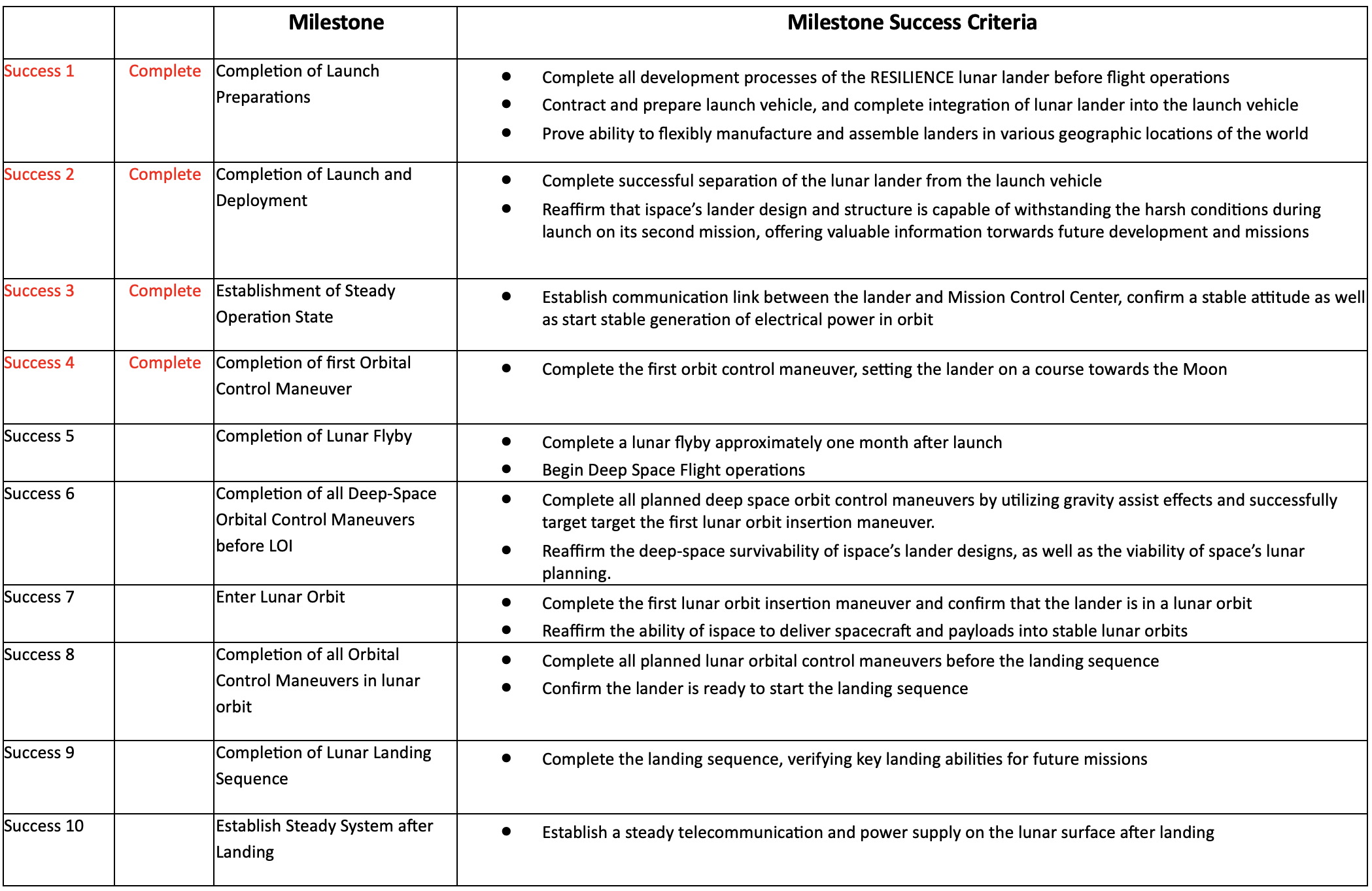22 Jan, 2025
National Central University’s Experiment is Taiwan’s First Beyond Earth’s Orbit
TOKYO –January 22, 2025 – ispace, inc. (ispace) )(TOKYO: 9348), a global lunar exploration company, announced today that mission control operators in the HAKUTO-R Mission Control Center in Nihonbashi, Tokyo have confirmed that the Deep Space Radiation Probe (DSRP), a customer payload from the National Central University of Taiwan that is aboard the RESILIENCE lunar lander, is receiving telemetry and collecting radiation data as it travels through space.

An image of the Deep Space Radiation Probe developed by the National Central University of Taiwan as it was being installed into ispace’s RESILIENCE lunar lander.
Developed by Taiwan’s National Central University, the DSRP payload is Taiwan’s first-ever to travel beyond Earth’s orbit. During its flight, it will continuously measure and collect data on the radiation environment in and outside the Van Allen belts, deep space, and on the lunar surface. The radiation data is extremely important for the design of spacecraft and future lunar facilities, as well as for manned activities on the lunar surface, and it is hoped that it will contribute to future lunar missions.
“This is a very big step forward for us, being the first Taiwan payload to fly beyond Low Earth Orbit. I am very proud of our student team who were able to design, implement, and qualify DSRP over two years of time, levering their past experience with small satellite missions, while also being able to learn from the experienced team at ispace,” said Dr. Loren C. Chang, Distinguished Professor and Department Chair, Department of Space Science & Engineering, National Central University of Taiwan. “As National Central University has been one of the pioneering institutions in space science and engineering in Taiwan since the 1960s, we are very happy to continue to be at the forefront of venturing to new frontiers, while also providing unmatched learning experiences for a new generation of space professionals.”
“We are delighted to be able to contribute to Taiwan’s first deep space exploration through our mission,” said Takeshi Hakamada, Founder & CEO of ispace. “In addition to the scientific results, the radiation measurements taken by the DSRP will also be significant in terms of promoting the development of the cislunar economy.”
ispace’s RESILIENCE lunar lander successfully completed its first orbital maneuver at 19:40:18 UTC, Jan. 16, 2025, setting the lander on a course towards the Moon and verifying operation of the main propulsion system, as well as the related guidance, control, and navigation system. The mission, ispace’s second to the Moon as part of the HAKUTO-R lunar exploration program, was launched on a SpaceX Falcon 9 rocket at 6:11:39 UTC, Jan. 15, 2025, and was successfully deployed from the rocket at 7:44:24 UTC. RESILIENCE is currently in Earth orbit and will complete a lunar flyby and then enter a low energy transfer orbit to arrive at lunar orbit, before making a planned touchdown.
Mission 2 Milestones
ispace has released a transparent set of criteria known as Mission 2 Milestones between launch and landing and aims to achieve the success criteria established for each of these milestones. The results from this mission as part of the HAKUTO-R lunar exploration program, will be weighed and evaluated against the criteria and lessons learned will be incorporated into future missions already in development.


Payloads
On board the RESILIENCE lunar lander will be commercial customer payloads including:
- Water electrolyzer equipment: From Takasago Thermal Engineering Co.
- Food production experiment: A self-contained module from Euglena Co.
- Deep Space Radiation Probe: Developed by the Department of Space Science and Engineering and Center for Astronautical Physics and Engineering, National Central University, Taiwan
- Commemorative alloy plate: Developed by Bandai Namco Research Institute, Inc. and modeled after “Charter of the Universal Century” from the animation Mobile Suit Gundam UC
- TENACIOUS micro rover: Developed by ispace-EUROPE, this rover will explore the landing site, collect lunar regolith, and relay data back to the lander. It will be equipped with a forward-mounted HD camera and a shovel.
- Moonhouse: A model house by Swedish artist Mikael Genberg that will be mounted on the rover.
The RESILIENCE lander will serve as a cultural artifact, carrying a UNESCO memory disk that preserves linguistic and cultural diversity.
ispace is leveraging its global presence through its three business units in Japan, the U.S., and Luxembourg, for the simultaneous development of upcoming missions. Mission 2, featuring the RESILIENCE lunar lander, is led by ispace Japan and was launched on Jan. 15, 2025. The TENACIOUS micro rover developed by ispace Europe SA, is expected to be deployed on the lunar surface to conduct a technological demonstration of regolith extraction. Mission 3, debuting the APEX 1.0 lunar lander, is led by ispace-U.S. and is expected to launch in 2026. Mission 6, which will utilize the Series 3 lander, currently being designed in Japan, is scheduled to be launched by 2027.
About ispace, inc. (https://ispace-inc.com)
ispace, a global lunar resource development company with the vision, “Expand our planet. Expand our future.”, specializes in designing and building lunar landers and rovers. ispace aims to extend the sphere of human life into space and create a sustainable world by providing high-frequency, low-cost transportation services to the Moon. The company has business entities in Japan, Luxembourg, and the United States with more than 300 employees worldwide. For more information, visit: www.ispace-inc.com and follow us on X: @ispace_inc.